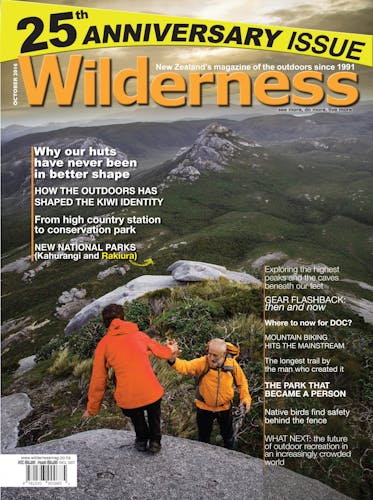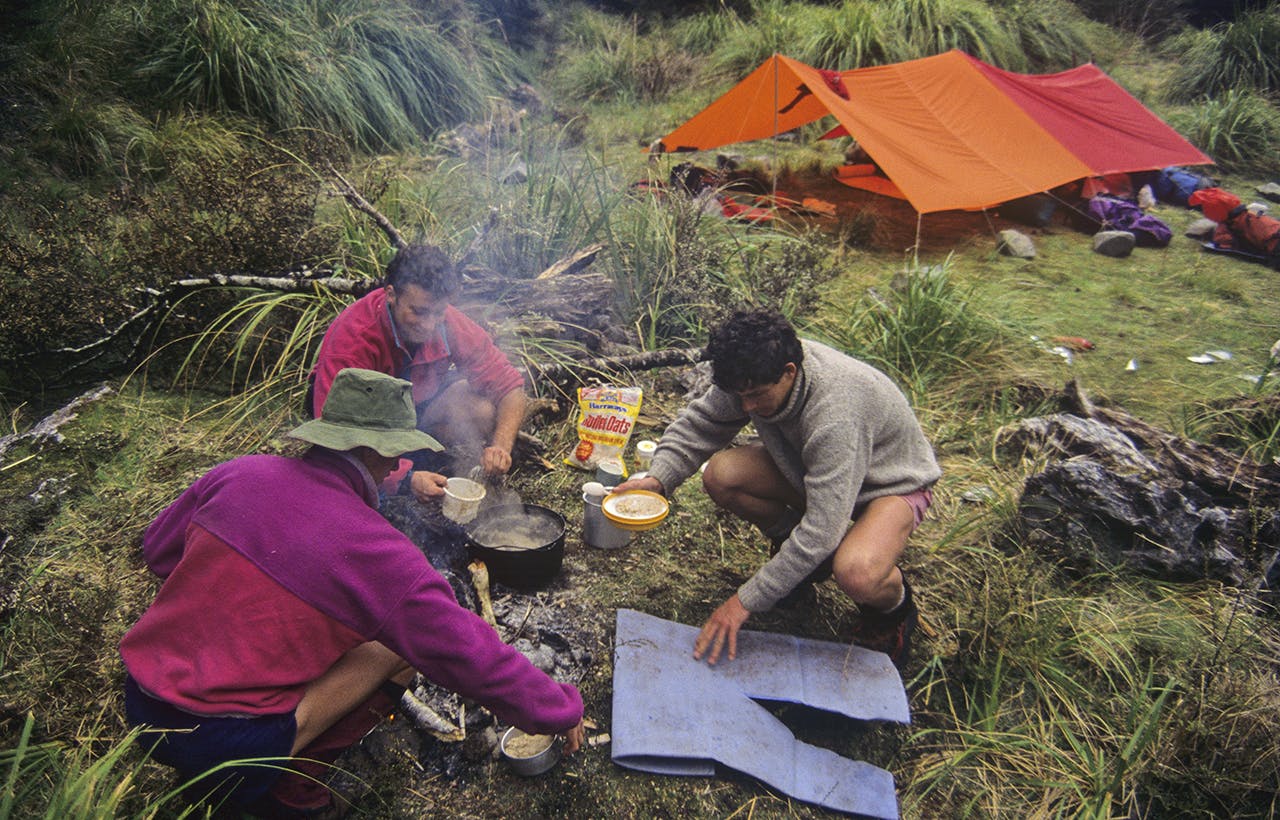A brief look at 25 years of outdoor gear.
By Rob Brown
Wilderness started in my last year at Massey University, 1991. Our club (MUAC) was in the middle of a purple patch with many active students and trips running every weekend. We were yet to feel the full impact of student loans and fees.
We were also in a purple patch with our choice of gear. No one could get enough purple fleece and purple Gore-Tex, so much so that you wondered whether or not New Zealand was a dumping ground for fabric of this colour. Sales were so great that the main New Zealand manufacturers of the time – Macpac and Fairydown – kept it in their range even when other colours became available. The two main retail chains, Bivouac and Alp Sports, were stocked full of it.
For those not content with dressing head-to-toe in purple, you could also purchase matching purple packs and tents. Manufacturers began introducing women’s size and cuts, available mainly in purple.
A mate of mine, who had a keen eye for a bad trend, refused to buy purple fleece or polypro, and instead wore woollen jerseys knitted by his mum. When he waxed lyrical about wool’s virtues, we laughed. No retailer sold woollen garments then.
We weren’t laughing when Jeremy Moon set up Icebreaker four years later and made a small fortune.
Macpac looked like it would become New Zealand’s internationally recognised outdoor brand, and it came close to cracking that tough nut. Globally, however, big change was on the way. By the late 1990s, with outdoor gear becoming mainstream, big capital entered the formerly niche scene, with its tentacles into cheap overseas labour. That made business hard for small Kiwi companies at the other end of the world. In the end, wool off the sheep’s back has been able to compete in the big capital 21st Century world, but it can’t be easy.
In the early 1990s, the only people that really frequented outdoor stores were those that actually went tramping and climbing. Who would have thought that outdoor clothing would suddenly become trendy to all sectors of society? Jan Cameron anticipated this and set up her chain of Kathmandu stores, taking the flood of new outdoor fabrics and styles to the mainstream. Soon, people were wearing down jackets to work.
It was also the zenith of the heavy canvas pack. Macpac sold truckloads of Torres, and Fairydown offloaded truckloads of Terra Novas. Macpac Olympus tents were heavier (3.5kg) than northern hemisphere ones, but never leaked. We slept on blue ‘snow foams’ strapped on our packs, where the leatherwood tore it to bits.
We used a map and compass to trudge along in the misty tops of Ruahine and Tararua. Instant backcountry meals were expensive and considered ‘emergency food’.
Some people used to carry a chunky walkman with a couple of cassettes. The idea of taking your entire music collection on an electronic device smaller than a matchbox was inconceivable.
In 1991, there was hardly anyone biking through the New Zealand wilderness, except for the half-crazy Kennett brothers. If anyone owned a late-1980s Specialized ‘Stumpjumper’, people goggled because there were so few shops selling ‘mountain’ bikes. Despite murmurings that mountain biking would become the ‘next big thing’ no one predicted just how huge it would become.
Over the past 25 years, there have been both good and bad changes in gear design and manufacture. Almost the entire outdoor apparel industry in Christchurch (once the capital of New Zealand manufacturing) was gutted and production moved to Asia. Now only Cactus, Ground Effect and Earth, Sea and Sky make their gear in New Zealand.
Some mad ‘innovations’ have appeared, such as the increased use of polyester for next-to-skin garments – it’s a terrible fabric with little insulation value when it gets wet. Handheld combined GPS and text-messaging devices can be very handy, but not so good when batteries fail and people don’t know how to use a traditional map and compass.
Positive developments include lighter and more comfortable gear. When I look at my standard tramping kit today, not much has changed – and yet quite a lot has.
My new inflatable sleeping mat is so light and compact it encourages me to camp more.
I don’t own a GPS and still prefer a map and compass, although I like the idea of getting weather updates on an InReach device. However, taking a cell phone into the mountains is a step too far for me.
The new LED headlamps perform so much better than the old clunkers we used to carry.
My own approach to outdoor gear is now tempered by a little bit more wisdom and a healthy suspicion of ‘devices’ as the next big thing. Unfortunately, however, my colour coordination has, if anything, gone backwards. It was so much easier just to grab that purple jacket off the rack.
– Rob Brown is a professional photographer and once worked at Macpac







